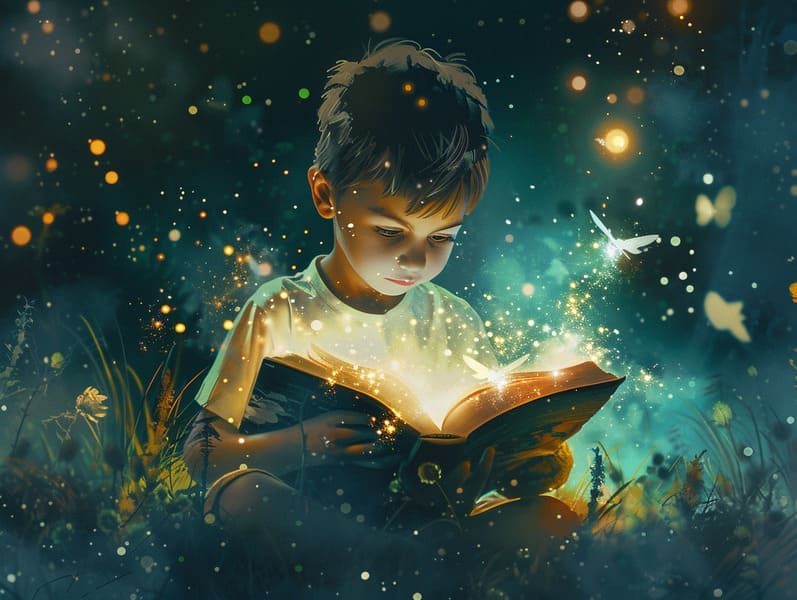
Fairy tales have enduring presence. These stories have been conveyed from one generation to the next well before they were ever inscribed. They developed from a variety of cultures, including African traditions. They were initially transmitted among grown-ups, often carrying themes and messages related to the societal norms and beliefs of the time.
The renowned Brothers Grimm, Jacob and Wilhelm, were among the first to assemble many of these beloved fairy tales. Their compilation, "Grimm's Story Collection," included classics like "The Little Glass Slipper," "Little Brother and Little Sister," and "Schneewittchen," which have since become pillars in the world of traditional fairy tales. Similarly, Andersen's fanciful stories, such as "The Mermaid," and "The Little Duckling," have captured hearts worldwide, securing their place in the pantheon of iconic fairy tales.
Despite being ancient, these tales remain as important as ever, especially as children's night stories. These delightful tales are now available in numerous formats, including artistically illustrated books, whimsical animations, and online storybooks.
Their unwavering allure can be connected to several fascinating points:
Ethical Lessons: Traditional fairy tales often impart important moral lessons. Fairy tales like "The Story of the Boy Who Cried Wolf" teach the value of truth, while "The Race of the Tortoise and the Hare" show the virtues of steadfastness and humility. These narratives offer the young clear distinctions between ethical and unethical, building their moral compass in a kind yet lasting way.
Compassion and Insight: Old fairy tales frequently illustrate characters facing challenges and struggles, urging audiences to connect with their struggles and champion their triumphs. For instance, "The Story of Beauty and the Beast" emphasizes the benefit of seeing beyond looks to comprehend the true being of a character, nurturing understanding and recognition.
Cultural Perception: Many ancient fairy tales are deeply embedded in the cultural contexts from which they developed. Learning from these narratives can provide informative snapshots into different historical contexts, strengthening a sense of world appreciation and recognition.
Creativity and Imagination: The supernatural elements in fairy tales—fairy godmothers—enliven children’s dreaming abilities. These stories take readers to magical realms, provoking imaginative dreams and a sense of enchantment that stays a lifetime.
Classic fairy tales are not only fascinating but also pedagogical. They act as whimsical tools in promoting various mental and emotional abilities in young readers. When classic fairy tales are narrated, they boost language proficiency by bringing new linguistic elements and detailed sentence structures. This practice also improves hearing abilities and attention span, as the young hang on every word, excited to see what happens next.
Furthermore, contemplating the themes and characters of old fairy tales can cultivate reasoning skills and analytical skills. Children are shown to pinpoint patterns, anticipate outcomes, and make sense of cause and effect. These debates also contribute to young readers communicate their thoughts and feelings, boosting their emotional intelligence.
In today’s modern era, the prevalence of digital fairy tales has made these narratives more accessible than ever. Online platforms and programs present extensive collections of popular fairy tales that can be perused or played anytime, anywhere. Fairy tales narrated are particularly sought after, sharing an engaging way for young readers to savor these magical stories. Audiobooks and narrated videos take characters and settings to life, often joined by entrancing music and instrumentals that improve the tale experience.
The timeless allure of traditional fairy tales lies in their ability to change these guys to the present while maintaining their core messages. Contemporary versions of these fairy tales often introduce more diverse protagonists and modern settings, making them relatable to today’s audience. However, the key lessons of guts, warmth, and even-handedness remain unchanged, continuing to resonate with young readers of all ages.
Traditional fairy tales also offer a sense of reassurance and closeness. They give a coherent narrative with a definite beginning, middle, and end, often winding up with the finalization of conflicts and the triumph of morality over immorality. This consistency can be placating for the young, presenting a sense of security in an dynamic world.
Old fairy tales continue to delight and enlighten new generations, maintaining their loveliness and value in modern society. As children's bedtime stories, they deliver up a perfect blend of fantasy and learning, advancing moral values, empathy, and creativity. The accessibility of free fairy tales online and the well-liked nature of fairy tales spoken ensure that these old narratives remain within reach to new generations.
By maintaining and distributing these tales, we continue to revere the rich tapestry of fantasy and cultural heritage. Whether you are reading a gorgeously illustrated book, seeing a internet library, or listening through an read-aloud book, the majesty of traditional fairy tales is always within reach. These stories highlight of the steadfast impact of tales and its ability to unite us across centuries and lands.
Be it you are discovering a colorful picture book, experiencing a web-based library, or playing an voice book, the charm of famous fairy tales is always within reach.
These stories emphasize of the persistent essence of fairy tales and its ability to bind us across epochs and places, forming a connection that captivates and teaches alike.